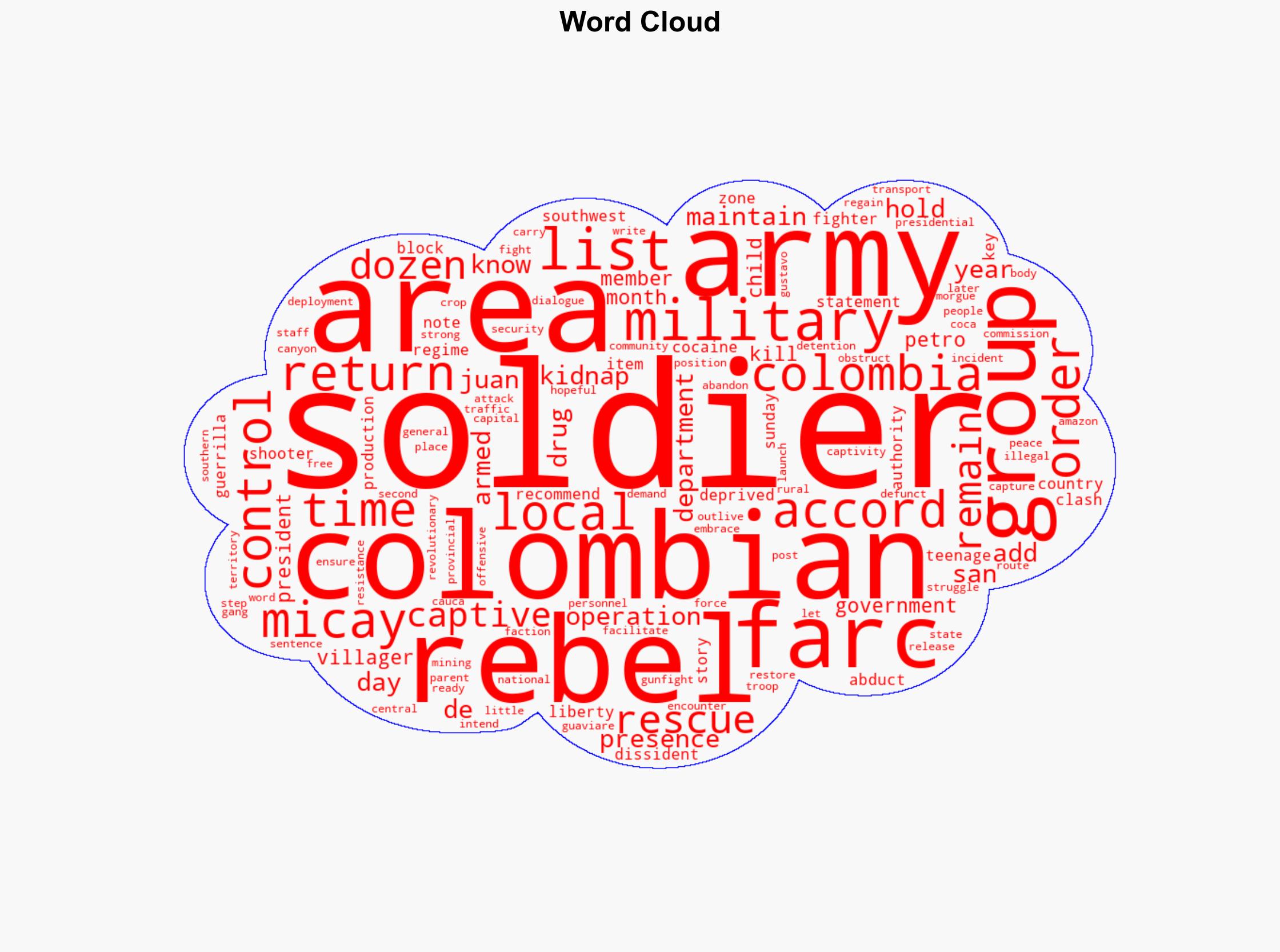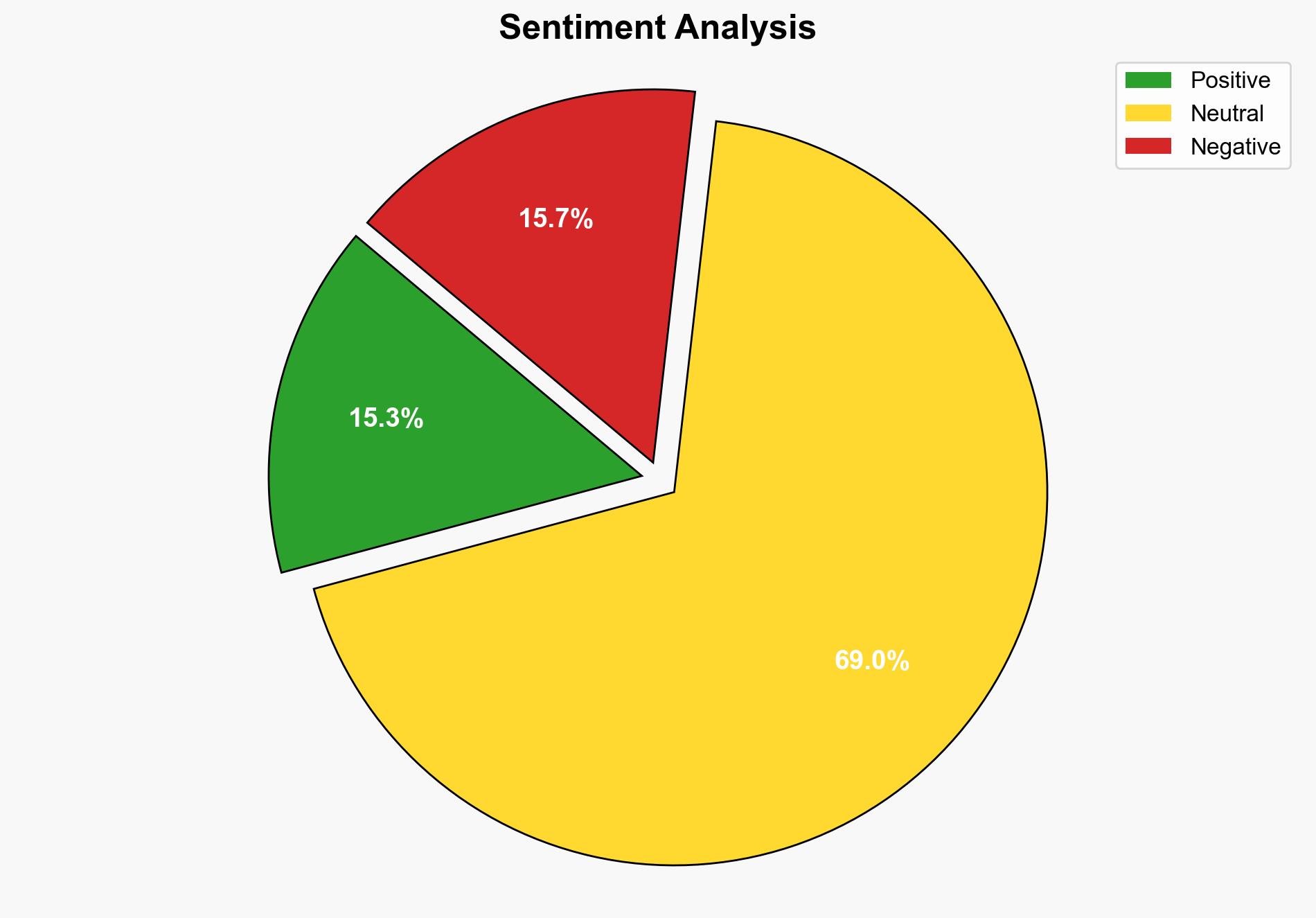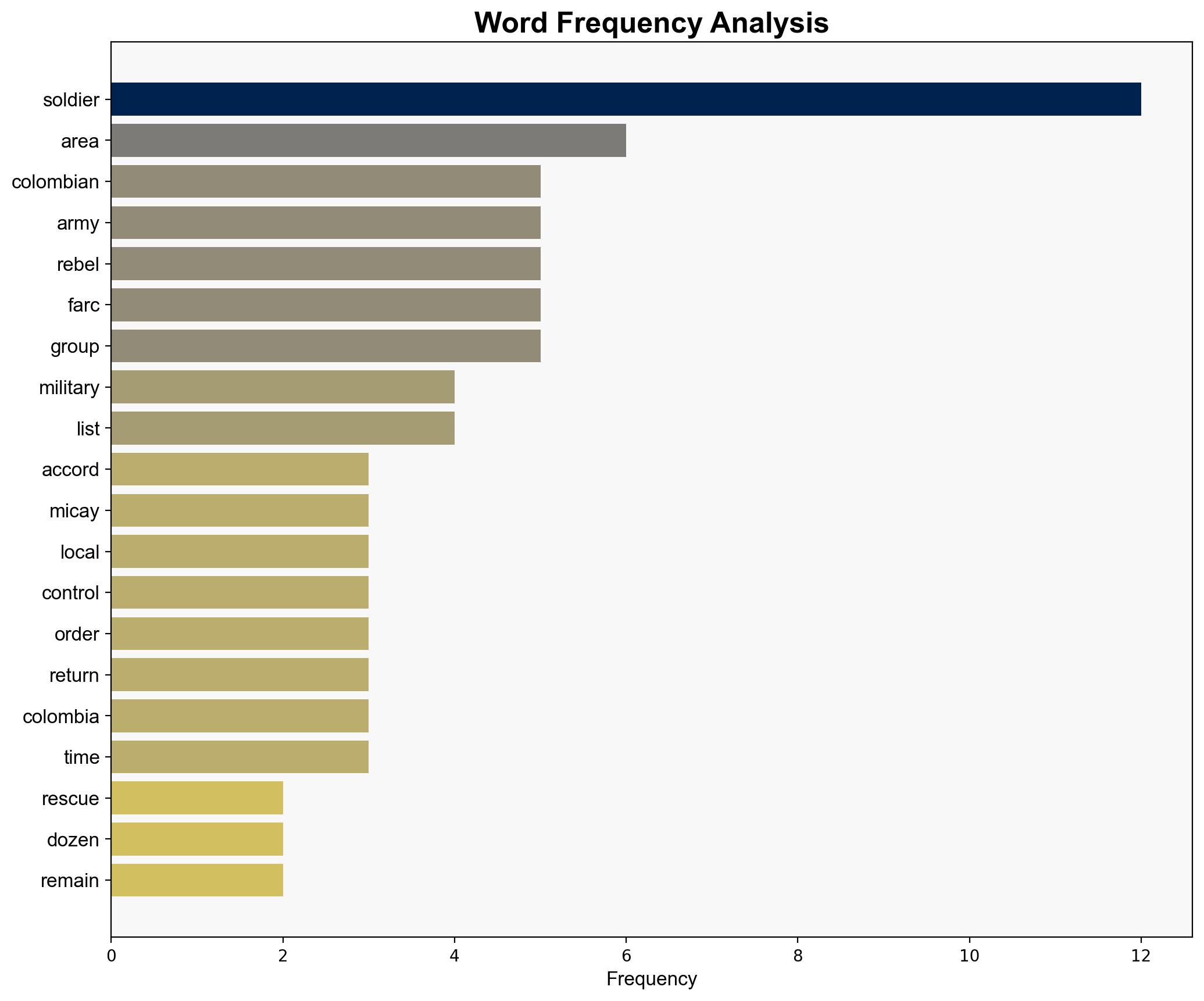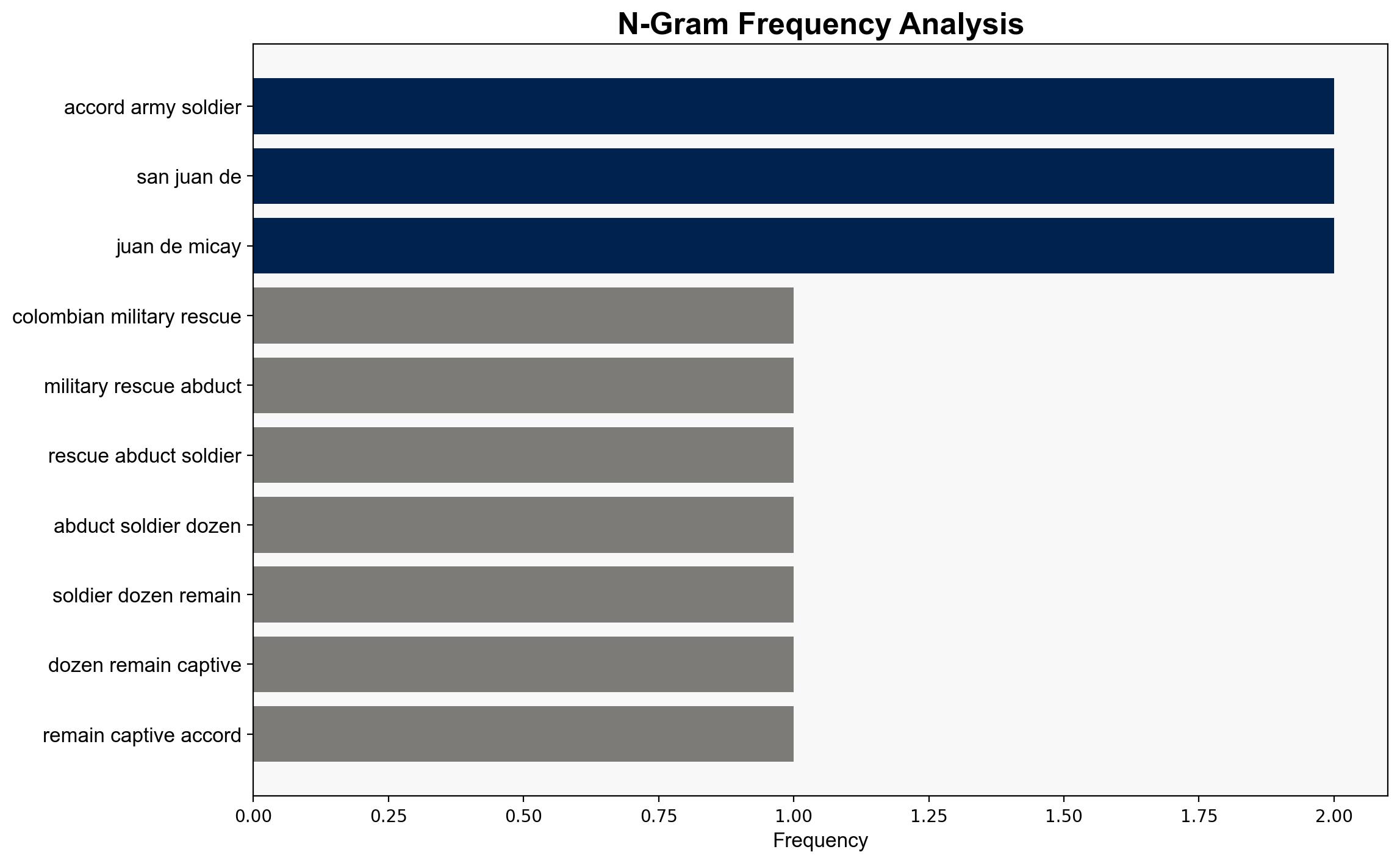Colombian military rescues 27 abducted soldiers dozens remain captive – Al Jazeera English
Published on: 2025-09-08
Intelligence Report: Colombian military rescues 27 abducted soldiers, dozens remain captive – Al Jazeera English
1. BLUF (Bottom Line Up Front)
The Colombian military successfully rescued 27 soldiers from captivity, but many remain held by rebel factions, highlighting ongoing instability in regions controlled by dissident groups. The most supported hypothesis suggests that the rescue operation is part of a broader military strategy to reassert control over key drug trafficking routes. Confidence level: Moderate. Recommended action: Increase intelligence operations to monitor dissident activities and strengthen community engagement to prevent further abductions.
2. Competing Hypotheses
Hypothesis 1: The rescue operation is a tactical move by the Colombian military to regain control over strategic areas critical for drug trafficking and illegal mining, with the primary goal of disrupting rebel operations and securing the region.
Hypothesis 2: The rescue operation is primarily a response to political pressure to demonstrate government capability and resolve, rather than a strategic military initiative aimed at long-term stabilization.
Using ACH 2.0, Hypothesis 1 is better supported due to the military’s focus on regaining control over drug trafficking routes and the historical context of ongoing conflict in these regions. Hypothesis 2 lacks sufficient evidence of political motivations driving the operation.
3. Key Assumptions and Red Flags
Assumptions:
– The military has the capability and resources to maintain control post-rescue.
– Rebel groups are primarily motivated by control over drug trafficking routes.
Red Flags:
– Lack of detailed information on the current status and intentions of remaining captives.
– Potential underestimation of local resistance and rebel group resilience.
4. Implications and Strategic Risks
The rescue operation could escalate tensions, leading to retaliatory actions by rebel groups, potentially increasing violence in the region. The continued presence of dissident factions poses a threat to regional stability and could disrupt economic activities, particularly in the coca cultivation areas. Failure to address underlying socio-economic issues may result in prolonged conflict.
5. Recommendations and Outlook
- Enhance intelligence gathering on rebel movements and local dynamics to anticipate future abductions.
- Strengthen community relations to build local support and reduce rebel influence.
- Scenario Projections:
- Best Case: Successful stabilization of the region with reduced rebel influence and improved security.
- Worst Case: Increased violence and abductions, leading to further destabilization and humanitarian crises.
- Most Likely: Continued skirmishes with intermittent military successes, but persistent rebel presence.
6. Key Individuals and Entities
– Gustavo Petro (President of Colombia)
– Revolutionary Armed Forces of Colombia (FARC) dissident groups
7. Thematic Tags
national security threats, counter-terrorism, regional focus, drug trafficking, military operations




